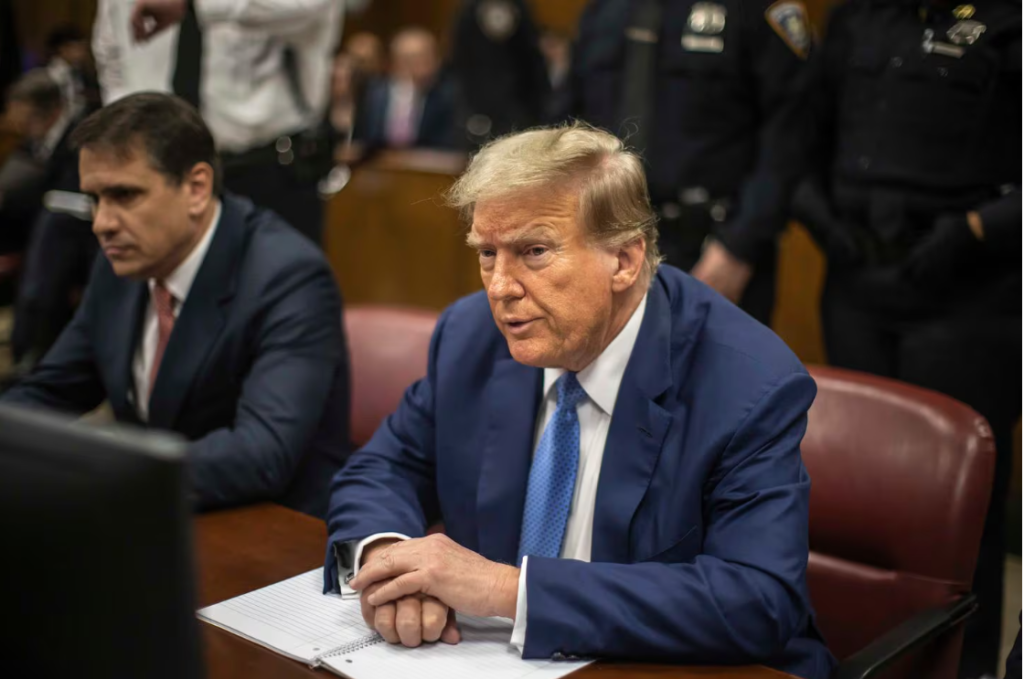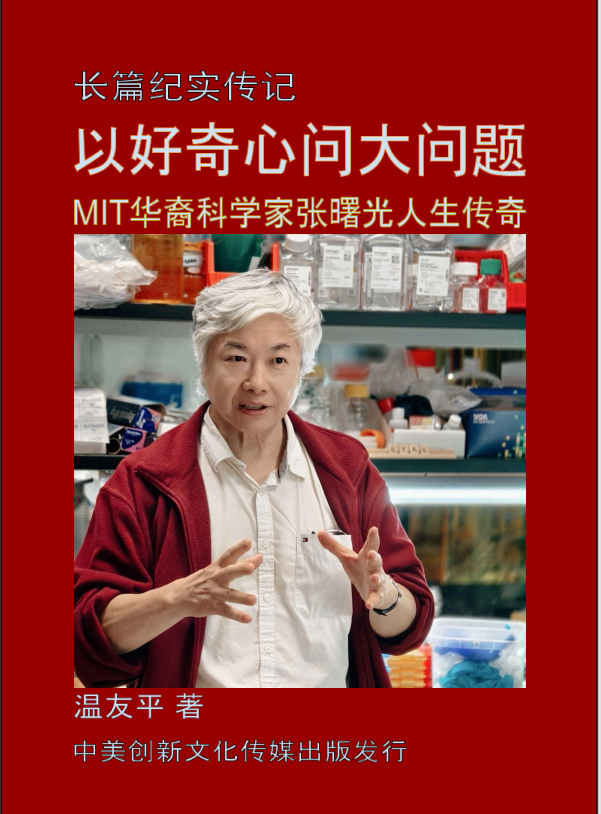【中美创新时报2024 年 5 月 20 日编译讯】(记者温友平编译)唐纳德·特朗普的明星证人周一在曼哈顿这位前总统的刑事审判中连续第四天也是最后一天出庭,抵御了辩护律师的连珠炮攻击,并承认自己曾经从特朗普的公司偷窃。《纽约时报》记者Ben Protess 和 Jonah E. Bromwich对此作了下述报道。
证人——特朗普的前私人律师、长期心腹迈克尔·科恩——为检方终结了此案,在他离开证人席后,检方就结束了。
在一周的证词中,科恩是唯一提供直接将特朗普与支持对他指控的伪造记录联系起来的第一手证据的人。他说,特朗普批准了一项伪造记录的计划,以掩盖涉及色情演员的性丑闻。
在周一的盘问中,特朗普的首席律师攻击了科恩的可信度,将他描绘成一个痴迷于推翻前总统的病态骗子。但科恩保持镇定,而一些陪审员似乎失去了注意力,他们在椅子上移动,目光游移。当检察官获得第二次讯问科恩的机会时,他们试图削弱盘问的大部分影响。
“你在这起案件中是否被指控犯有任何罪行?” 检察官苏珊·霍芬格(Susan Hoffinger)问他。 “不,女士,”科恩回答道,并解释说他只是作为“被传唤的证人”。
然而,科恩作为第 20 位、也是最后一位出庭作证的检方,并不是普通的证人。他以其他人无法做到的方式阐述了检方的大部分案件,将不同的事实统一起来,将特朗普描绘成一名罪犯。
科恩周一在特朗普特有的场面中出庭,法庭上挤满了这位前总统支持者的不拘一格的随行人员——其中一些人自己也遇到了法律问题。
周一的十几人小组包括共和党议员和知名律师艾伦·德肖维茨(Alan Dershowitz)。特朗普的法律顾问鲍里斯·埃普什坦(Boris Epshteyn)也在亚利桑那州受到起诉。其中包括前纽约警察局长伯纳德·克里克(Bernard Kerik),特朗普因联邦重罪指控而赦免了他。还有查克·齐托 (Chuck Zito),他是地狱天使摩托车团伙纽约分会的前领导人,因毒品指控入狱多年。
他们冲进法庭支持特朗普,因为特朗普与他的前调解人和现任宿敌的对峙仍在继续。
现在检方将把审判移交给辩方。目前尚不清楚特朗普的律师是否会自己提起诉讼,但他们已表示可能会传唤科恩自己的一位前法律顾问出庭,以加强对他可信度的攻击。
周一,特朗普律师托德·布兰奇的质询首次触及案件的核心:特朗普偿还科恩向色情演员斯托米·丹尼尔斯支付的封口费。 科恩在 2016 年总统选举前夕支付了 13 万美元,这让她对与特朗普发生性关系的说法保持沉默,这场性关系曾威胁到特朗普的竞选活动。
作为回报,科恩实际上得到了 42 万美元——他说这笔钱包括封口费、奖金、税金,以及在一项不相关的事件中偿还一家科技公司的 5 万美元。但在布兰奇的追问下,科恩承认,他已经将专门用于科技公司 RedFinch 的资金一半以上收入囊中。
“你从特朗普集团偷了东西,对吗?” 布兰奇问道。
“是的,先生,”科恩回答道。
布兰奇还强调了科恩从攻击他的前任老板和导师特朗普中获得了多少钱,并暗示他的证词是出于贪婪,而不是说真话。科恩已经写了两本书,正在考虑写第三本书,并从播客中获利颇丰。 他甚至表示他可能竞选国会议员。
当布兰奇建议定罪将完成科恩的复仇阴谋时,科恩纠正了他,至少在经济学上。
他说,如果特朗普毫发无损地逃脱会更好,因为“这让我将来有更多的话题可以谈论。”
我们无法知道陪审团对科恩的看法,检察官在整个审判过程中提出了科恩过去的谎言和不当行为,这几乎不是什么秘密。按照这个速度,陪审员可能要到下周才能开始审议:本周在阵亡将士纪念日假期前仅三天开庭,法官暂定结案陈词时间为 5 月 28 日。
周一,当检察官霍芬格有机会再次询问科恩时,她试图抹平他证词中一些较为粗糙的部分。
为了强调特朗普认可科恩的行为,她制作了特朗普的一位律师发来的一条短信,该律师对科恩告诉媒体——他现在说的是错误的——他主动贿赂了丹尼尔斯表示赞赏。
短信中写道:“客户对你所做的事情表示感谢”,似乎指的是特朗普。
霍芬格还回顾了检方称特朗普为隐瞒封口费交易而伪造的记录。 特朗普面临缓刑或最高四年监禁,被指控犯有 34 项伪造商业记录重罪,其中每一项与他在 2017 年向科恩报销有关的文件都包括一项:11 份给科恩的支票(其中大部分是特朗普签署的),11 份支票是给科恩的。 科恩提交的发票,以及特朗普账本中的 12 个条目。
这些文件都提到了“保留协议”,暗示科恩收到的这笔钱用于日常开支。布兰奇强调了科恩在这段时间内为特朗普家族执行的各种法律任务,而霍芬格则专注于具体的金额和记录。
“您2017年收到的42万美元与您2017年提供的法律服务有关系吗?” 她问科恩。他斩钉截铁地回答:“没有。”
霍芬格还要求科恩评估他与特朗普闹翻的影响,特朗普多年来一直是他生活的焦点。
“我的整个生活都发生了翻天覆地的变化,”他说。
本文最初发表于《纽约时报》。
题图:5 月 20 日,前总统唐纳德·特朗普在纽约曼哈顿刑事法院当天庭审开始时出席刑事审判。DAVE SANDERS/NYT
附原英文报道:
Cohen endures cross-examination under the eyes of Trump’s entourage
By Ben Protess and Jonah E. Bromwich New York Times,Updated May 20, 2024
NEW YORK — The star witness against Donald Trump took the stand Monday for a fourth and final day at the former president’s criminal trial in Manhattan, fending off a fusillade of attacks from defense lawyers and acknowledging that he once stole from Trump’s company.
The witness — Michael Cohen, Trump’s onetime personal lawyer and longtime henchman — capped the case for the prosecution, which rested once he left the stand.
Over his week of testimony, Cohen was the only person to offer firsthand evidence directly linking Trump to the falsified records that underpin the charges against him. Trump, he said, approved a plan to fake the records to cover up a sex scandal involving a porn actor.
During Monday’s cross-examination, Trump’s lead lawyer assailed Cohen’s credibility, painting him as a pathological liar obsessed with taking down the former president. But Cohen maintained his composure, while some jurors seemed to lose focus as they shifted in their chairs and their eyes wandered. When prosecutors received a second opportunity to question Cohen, they sought to blunt much of the impact of the cross-examination.
“Are you charged with any crimes in this case?” a prosecutor, Susan Hoffinger, asked him. “No, ma’am,” Cohen replied, explaining that he was there merely as a “subpoenaed witness.”
However, Cohen, the 20th and final person to take the stand for the prosecution, was not just any witness. He illustrated much of the prosecution’s case as no one else could, harmonizing disparate facts to portray Trump as a criminal.
Cohen took the stand Monday amid a uniquely Trumpian spectacle, as an eclectic entourage of the former president’s supporters — some with legal troubles of their own — packed the courtroom.
The group of more than a dozen on Monday included Republican lawmakers and Alan Dershowitz, the high-profile lawyer. There was also a legal adviser to Trump who is under indictment in Arizona, Boris Epshteyn. There was Bernard Kerik, the former New York police commissioner whom Trump pardoned for federal felony charges. And then there was Chuck Zito, a former leader of the New York chapter of the Hells Angels motorcycle gang, who spent years in prison on drug charges.
They swept into the courtroom to back up Trump as his face-off with his former fixer and current nemesis continued.
Now the prosecution will turn over the trial to the defense. It is unclear whether Trump’s lawyers will mount a case of their own, but they have signaled they may call one of Cohen’s own former legal advisers to the stand to reinforce their attacks on his credibility.
On Monday, the questioning from Trump’s lawyer, Todd Blanche, for the first time ventured toward the heart of the case: Trump’s reimbursement of Cohen for his hush-money payment to the porn actor, Stormy Daniels. Cohen’s $130,000 payment on the eve of the 2016 presidential election silenced her account of a sexual rendezvous with Trump that had threatened to derail his campaign.
In return, Cohen was actually paid $420,000 — an amount that he said included the hush money, a bonus, money for taxes, and $50,000 to repay a tech company in an unrelated matter. But when pressed by Blanche, Cohen acknowledged that he had pocketed more than half the money earmarked for the tech company, RedFinch.
“You stole from the Trump Organization, is that right?” Blanche asked.
“Yes, sir,” Cohen replied.
Blanche also emphasized how much money Cohen has reaped from his attacks on his former boss and mentor, Trump, suggesting that his testimony was motivated by greed, not truth-telling. Cohen has written two books and is considering a third, and has profited handsomely from a podcast. He has even said he might run for Congress.
And when Blanche suggested that a conviction would complete Cohen’s revenge plot, Cohen corrected him, at least on the economics.
He said it would be better if Trump escaped unscathed, because “it gives me more to talk about in the future.”
There is no way of knowing what the jury thinks of Cohen, whose past lies and misdeeds were hardly a secret after prosecutors raised them throughout the trial. At this pace, jurors might not begin deliberations until next week: With court in session only three days this week before the Memorial Day holiday, the judge has tentatively set closing arguments for May 28.
On Monday, when Hoffinger, the prosecutor, had the opportunity to question Cohen again, she sought to smooth some of rougher edges of his testimony.
To underscore the idea that Trump approved of Cohen’s conduct, she produced a text message from one of Trump’s lawyers, who expressed appreciation for Cohen’s telling the media — he now says falsely — that he had paid off Daniels on his own initiative.
“Client says thank you for what you do,” the text message read, appearing to refer to Trump.
Hoffinger also returned to the records that the prosecution says Trump faked to conceal the hush-money deal. Trump, who faces probation or up to four years in prison, is charged with 34 felony counts of falsifying business records, one for each document related to his reimbursement of Cohen in 2017: 11 checks to Cohen (most of which Trump signed), 11 invoices submitted by Cohen, and 12 entries in Trump’s ledger.
The documents all referred to a “retainer agreement,” implying that Cohen received the money for ordinary expenses. While Blanche highlighted a variety of legal assignments Cohen performed for the Trump family around this time, Hoffinger focused intently on specific sums and records.
“Did the $420,000 that you received in 2017 have anything to do with legal services you provided in 2017?” she asked Cohen. He bluntly replied: “No.”
Hoffinger also asked Cohen to assess the impact of his falling-out with Trump, who had been the focus of his existence for years.
“My entire life has been turned upside down,” he said.
This article originally appeared in The New York Times.

